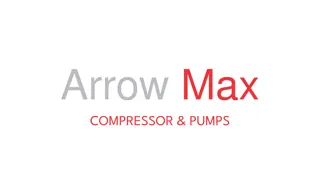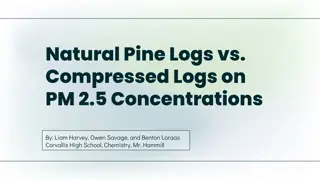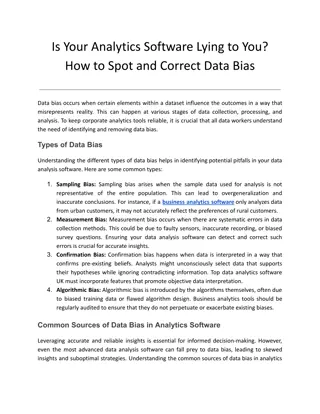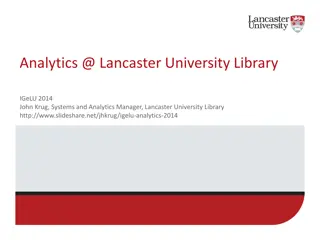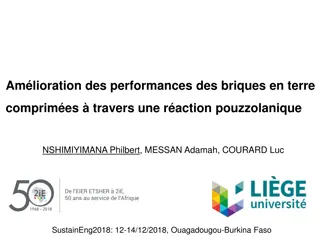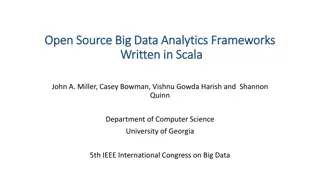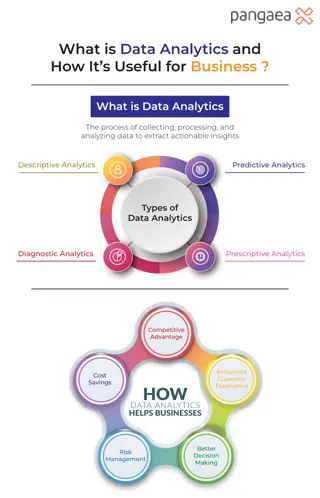High Performance Text Analytics on Compressed Data
A programming framework for high performance text analytics on compressed data, exploring the potential of conducting analytics directly on compressed data. Utilizing grammar-based compression and DAG representation for efficient data recovery in a resource-intensive environment.
Download Presentation

Please find below an Image/Link to download the presentation.
The content on the website is provided AS IS for your information and personal use only. It may not be sold, licensed, or shared on other websites without obtaining consent from the author.If you encounter any issues during the download, it is possible that the publisher has removed the file from their server.
You are allowed to download the files provided on this website for personal or commercial use, subject to the condition that they are used lawfully. All files are the property of their respective owners.
The content on the website is provided AS IS for your information and personal use only. It may not be sold, licensed, or shared on other websites without obtaining consent from the author.
E N D
Presentation Transcript
ICS-2018 June 12-15, Beijing Zwift Zwift : A Programming Framework : A Programming Framework for High Performance Text for High Performance Text Analytics on Compressed Data Analytics on Compressed Data Feng Zhang , Jidong Zhai , Xipeng Shen #, Onur Mutlu , Wenguang Chen Renmin University of China Tsinghua University #North Carolina State University ETH Zu rich 1
Motivation Data management evolution in history. Big data System Database System Data warehouse MySQL SQL Server DB2 Data Warehousing Mining Complex structures MapReduce Hadoop Spark Every data, 2.5 quintillion bytes of data created 90% data in the world today has been created in the last two years alone[1]. What if the data are too big that exceed storage capacity? QUESTION: [1] What is Big Data? https://www-01.ibm.com/software/data/bigdata/what-is-big-data.html 2
Motivation Challenge 1: SPACE: Large Space Requirement Challenge 2: TIME: Long Processing Time Observation: Using Hash Table to check redundant content REUSE data redundancy ratio 100 50 GB redundancy ratio (%) 80 150 GB Whether we can perform 60 40 20 analytics directly on compressed data? 0 512B 1KB 4KB chunk size 3
Motivation Our Idea: Text analytics directly on compressed data (TADOC) Input: Rules: R0: R1 a R2 R2 edge R0 R1 a R2 R2 R1 a b R2 R1 c R1 d a b a a b c a b d a b c a b d R1 c R1 d R2: a b R1: (a) Original data (b) Grammar-based compression (c) DAG Representation Feng Zhang, Jidong Zhai, Xipeng Shen, and Onur Mutlu. Potential of A Method for Text Analytics Directly on Compressed Data. Technical Report TR-2017-4, NCSU, 2017. 4
Motivation How text analytics directly on compressed data (TADOC) recovers data? Output: R0: R1 a R2 R2 R2: R1 c R1 d R1: a b 5
Motivation How text analytics directly on compressed data (TADOC) recovers data? Output: R0: R1 a R2 R2 a b R2: R1 c R1 d R1: a b 6
Motivation How text analytics directly on compressed data (TADOC) recovers data? Output: R0: R1 a R2 R2 a b a R2: R1 c R1 d R1: a b 7
Motivation How text analytics directly on compressed data (TADOC) recovers data? Output: R0: R1 a R2 R2 a b a R2: R1 c R1 d R1: a b 8
Motivation How text analytics directly on compressed data (TADOC) recovers data? Output: R0: R1 a R2 R2 a b a R2: R1 c R1 d R1: a b 9
Motivation How text analytics directly on compressed data (TADOC) recovers data? Output: R0: R1 a R2 R2 a b a a b R2: R1 c R1 d R1: a b 10
Motivation How text analytics directly on compressed data (TADOC) recovers data? Output: R0: R1 a R2 R2 a b a a b c R2: R1 c R1 d R1: a b 11
Motivation How text analytics directly on compressed data (TADOC) recovers data? Output: R0: R1 a R2 R2 a b a a b c a b R2: R1 c R1 d R1: a b 12
Motivation How text analytics directly on compressed data (TADOC) recovers data? Output: R0: R1 a R2 R2 a b a a b c a b d R2: R1 c R1 d R1: a b 13
Motivation How text analytics directly on compressed data (TADOC) recovers data? Output: R0: R1 a R2 R2 a b a a b c a b d a b c a b d R2: R1 c R1 d R1: a b 14
Motivation Text analytics directly on compressed data (TADOC), why it is good? In format. R0: R1 a R2 R2 Appear more than once, but only store once! R2: R1 c R1 d Challenge 1: Space R1: a b Appear more than once, but only compute once! Challenge 2: Time 15
Whats more? Even BETTER! 16
Motivation Text analytics directly on compressed data (TADOC), why it is good? In Process: R0: R1 x2 a x1 R0: R1 a R2 R2 x1 R2 R0: R1 a R2 R2 2 2 1 R2: R1 c R1 d x2 1 R2: c R1 x1 R2: R1 c R1 d d x1 2 2 R1: a b R1: a b R1: a x1 Further saves storage space and computation time. In each rule, we may remove sequence info too. Some b x1 i weight applications do not need to keep the sequence. 17
Outline We are here! Introduction Motivation & Example Programming Challenges Solution Zwift Implementation Language Overview Language Features Results Benchmarks Performance Storage Savings & Productivity Conclusion Use word count for illustration Not easy to generalize this technique A conceptual framework and a high level solution How we implement our idea Exhibition of the Zwift from several perspectives 18
Example word a count <element, frequency> 0 1 6 i Step # b c d 0 0 0 2 5 2 Word Count i Weight 1 Calculation; R0 -> R1, R0 -> R2. Weight of R2: 2 Local word table in R2: <c,1>, <d,1> Local rule table in R2: <R1, 2> Weight of R0: 1 Local word table in R0: <a,1> Local rule table in R0: <R1,1>, <R2, 2> R0: R1 a R2 R2 2 1 R2: R1 c R1 d 4 Calculation; R2 -> R1. 2 3 Calculation: (4+1). R1: a b Weight of R1: 5 Local word table in R1: <a,1>, <b,1> 4 Results integration. 19
Example i Step # Word Count i Weight R0 propagates the frequency of R1 (which is 1) to R1, and the frequency of R2 (which is 2) to R2. 1 R0: R1 a R2 R2 Weight of R0: 1 Local word table in R0: <a,1> Local rule table in R0: <R1,1>, <R2, 2> 2 1 R2: R1 c R1 d 4 3 R1 calculates its weight, which is 5 (4+1). R2 calculates its weight (which is 2), and propagates the frequency of R1 multiplied by R2 s weight to R1. 2 Weight of R1: 5 Local word table in R1: <a,1>, <b,1> R1: a b Weight of R2: 2 Local word table in R2: <c,1>, <d,1> Local rule table in R2: <R1, 2> We integrate the local word table in each node multiplied by its weight as the final result. 4 20
Programming Challenges i Step # 1 Problem dimension i Weight Weight of R0: 1 Local table in R0: <a,1> R0: R1 R1 R2 a 2 How to keep file information? When to remove sequence information? 1 R1: R2 c R2 d Implementation dimension 4 2 R2: a b Weight of R1: 2 Local table in R1: <c,1>, <d,1> 3 Dataset dimension Weight of R2: 5 Local table in R2: <a,1>, <b,1> 4 We integrate the local table in each node multiplied by its weight as the final result. 21
Programming Challenges Step # i <w,i> Word table Problem dimension <a,6>, <b,5> <c,2>, <d,2> CFG relation Information propagation 3 <a, 2 2 + 1 +1> = <a, 6> <b, 2 2 + 1> = <b, 5> <c, 1 2 > = <c, 2> <d, 1 2 > = <d, 2> 2 Which one is better? R0: R1 R1 R2 a Implementation dimension R1 : <a,2>, <b,2> <c,1>, <d,1> R2 c R2 d <a, 1 2> = <a, 2> <b, 1 2> = <b, 2> 1 <c, 1> <d, 1> <a,1>, <b,1> Dataset dimension R2: a b 22
Programming Challenges Problem dimension Traversal Order or or ? Implementation dimension The best traversal order may depend on input. Dataset dimension 23
Solution A conceptual framework, a six-element tuple (G, V, F, ,D, ) A graph G, DAG representation R0: R1 a R2 R2 R2: R1 c R1 d G, how to represent it. R1: a b 24
Solution A conceptual framework, a six-element tuple (G, V, F, ,D, ) A domain of values V, possible values as the outputs R0: R1 a R2 R2 V, what do we want to get from G? R2: R1 c R1 d R1: a b 25
Solution A conceptual framework, a six-element tuple (G, V, F, ,D, ) A domain of values F, possible values to be propagated R0: R1 a R2 R2 2 1 R2: R1 c R1 d 4 F, what to propagate? R1: a b 26
Solution A conceptual framework, a six-element tuple (G, V, F, ,D, ) A meet operator , how to transform values 1 Calculation; R0 -> R1, R0 -> R2. , how to propagate values? R1 a R2 R2 R0: 2 1 R2: R1 c R1 d 4 3 Calculation: (4+1). Calculation; R2 -> R1. 2 R1: a b 27
Solution A conceptual framework, a six-element tuple (G, V, F, ,D, ) A direction of the value flow D R1 a R2 R2 R0: D, what direction? R2: R1 c R1 d R1: a b 28
Solution A conceptual framework, a six-element tuple (G, V, F, ,D, ) A gleaning operator , final stage of the analytics 1 R0: R1 a R2 R2 2 , the last step, how to generate results? 1 R2: R1 c R1 d 4 2 3 R1: a b Results integration. 4 29
Solution High-level algorithm for TADOC: (1) Loading: Load the grammar, build G (or its variants), and initialize the data structures local to each node or global to the algorithm. Compressed data (DAG) (2) Propagation: Propagate information with the meet operator while traversing G in direction D. Memory DAG traversal (3) Gleaning: Glean information through the gleaning operator and output the final results. Results 30
Contribution How to generalize the idea of TADOC Zwift, the first programming framework for TADOC The Zwift Language A compiler and runtime A utility library 31
Outline Introduction Motivation & Example Programming Challenges Solution Zwift Implementation Language Overview Language Features Results Benchmarks Performance Storage Savings & Productivity Conclusion 32
The Zwift Language Zwift DSL template. The Conceptual Framework (G, V, F, ,D, ) A graph G. A domain of values V. A domain of values F. A meet operator . A direction of the value flow D. A gleaning operator . 01 ELEMENT = LETTER/WORD/SENTENCE 02 USING_FILE = true/false 03 NodeStructure = { 04 //data structures in each node 05 } 06 Init = { 07 //initializations for each node in ZwiftDAG 08 } 09 Direction = FORWARD/BACKWARD/DEPTHFIRST 10 Action = { 11 //actions taken at each node during a traversal 12 } 13 Result = { 14 // result structure 15 } 16 FinalStage = { 17 // final operations to produce the results 18 } 33
Language Features Edge Merging Edge merging merges multiple edges between two nodes into one, and the weight of the edge may be used to indicate the number of original edges in the Zwift code. Node Coarsening Node coarsening reduces the size of the graph, and at the same time, reduces the number of substrings spanning across nodes. Two-Level Bit Vector Level Two contains a number of N -bit vectors (where N is a configurable parameter). Level One contains a pointer array and a level-1 bit vector. 34
Language Features Coarse-Grained Parallelism The parallelism is at the data level. The coarse-grained method also simplifies the conversion from sequential code to parallel and distributed versions of the code. Version Selection Zwift allows programmers to easily run the different versions on some representative inputs. Double Compression Double compression performs further compression (e.g., using Gzip) of the compressed results from Sequitur. 35
Outline Introduction Motivation & Example Programming Challenges Solution Zwift Implementation Language Overview Language Features Results Benchmarks Performance Storage Savings & Productivity Conclusion 36
Benchmarks Six benchmarks Word Count, Inverted Index, Sequence Count, Ranked Inverted Index, Sort, Term Vector Five datasets 580 MB ~ 300 GB Two platforms Single node Spark cluster (10 nodes on Amazon EC2) 37
Benchmarks processing time processing (a) Manual-direct (baseline) result original files processing time preprocessing time Gzip Gunzip processing result compression original files (b) Manual-gzip processing time preprocessing time Double compression Gunzip processing result original files (c) Manual-opt processing time preprocessing time Double compression Gunzip processing result original files (d) Zwift 38
Performance Execution time benefits of speedup over manual-direct. Zwift yields 2X speedup, on average, over manual-direct. Zwift and manual-opt show similar performance, which indicates that Zwift successfully unleashes most power of TADOC. 5 Manual-opt Zwift 4 speedup 3 2 1 0 A B C D E 39
Storage Savings Zwift reduces storage usage by 90.8%, even more than manual-gzip does. Manual-gzip (%) Zwift(%) 100.00% storage savings 50.00% 0.00% A B C D E dataset 40
Productivity On average, the Zwift code is 84.3% shorter than the equivalent C++ code. 800 C++ Zwift DSL lines of code 600 400 200 0 Word Count Sort Inverted Index Term Vector Sequence Count Ranked Inverted Index 41
Conclusion Zwift is an effective framework for TADOC. It reduces storage usage by 90.8% It reduces execution time by 41.0% Zwift significantly improves programming productivity. 42
Thanks! Any questions? 43






